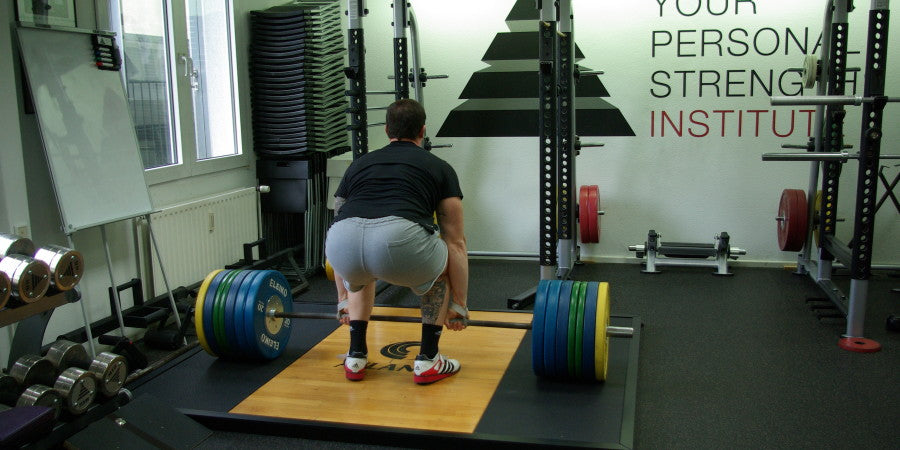Tempo is one of the most important training parameters because it has a major impact on the training effect. A simple example is: 15 reps is not equal to 15 reps. 15 reps at a 1010 tempo is a total of 30 seconds of time under tension. 15 reps at a 3010 tempo is a total of 60 seconds of time under tension. The difference in Training Effect between a set lasting 30 seconds and a set lasting 60 seconds is large. Therefore, the pace must be prescribed and standardized in any training program to ensure the intended training effect.
Therefore, every single program that I write for clients and athletes contains a speed specification to ensure the training effect and thus progress.
Therefore, every single training program I release contains a detailed tempo description to ensure training effect and progress.
I use a 4 number tempo. This is the most accurate format, covering all 4 relevant parts of a movement.
The meaning of the numbers is:
The first number – Drop the weight
As you lower the weight, the eccentric contraction occurs and the muscle stretches under load. An example of this is when you lower yourself on the descending portion of the squat. Eccentric pace is neglected in just about every average gym in the world. This is unfortunate since the eccentric contraction is the most important part of the rep for building size and strength.
The second number - rest after lowering the weight
This pause usually occurs between the eccentric (lowering) phase and the concentric (raising) phase of a rep. In the squat, this is the point when the hamstrings completely cover the calves. A pause in an awkward position of an exercise, such as the bottom of the squat, increases intramuscular tension and decreases the stretch reflex. This will further advance your strength development.
The third number - Lift the weight
The concentric contraction occurs when a muscle shortens, such as when rising from the bottom of the squat. When an "X" is used in the formula, it implies explosive action with full acceleration.
The fourth number - pause after lifting the weight
This is the point that occurs at the end of the concentric contraction, just like when you have fully extended your knees at the end of the squat. Pauses in this advantageous position also increase the recruitment of high-speed fibers. These high-speed fibers are the fibers that produce the greatest gains in strength and power/speed.
pace in practice
Overall, a 4210 tempo description for the squat would look like this. You would lower yourself to the lowest position for four seconds. Then you would pause for two seconds when the hamstrings completely covered your calves. Immediately after that you would straighten up in a second and eventually not pause at the top before beginning the next rep.
Of all the loading parameters that can be manipulated to design strength training programs, pace is definitely the most underestimated and neglected aspect of program design. Using the tempo description will ensure the prescribed Training Effect, which is the basis for maximum and sustained progress in training.
Good luck with incorporating speed into your training!
Image: YPSI athlete Markus Bachofer in the starting position of the LH deadlift. One of the most underestimated exercises for the optimal choice of tempo.

